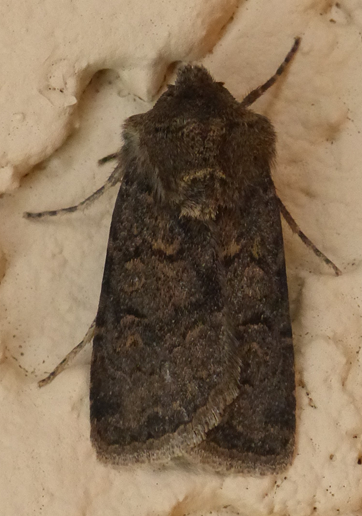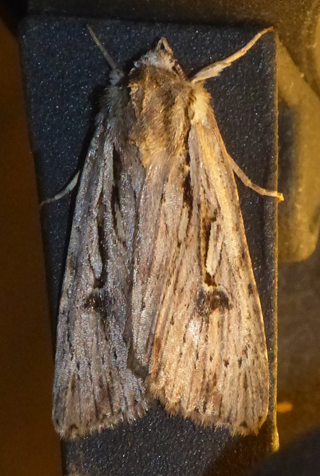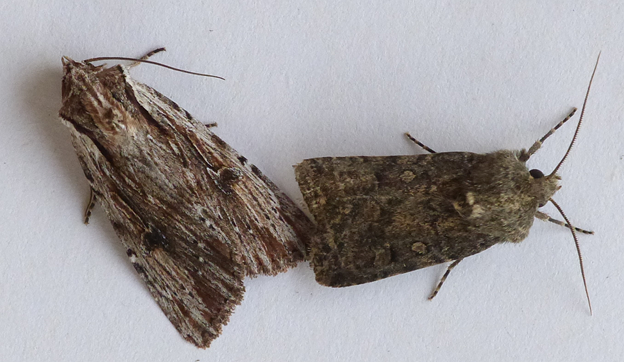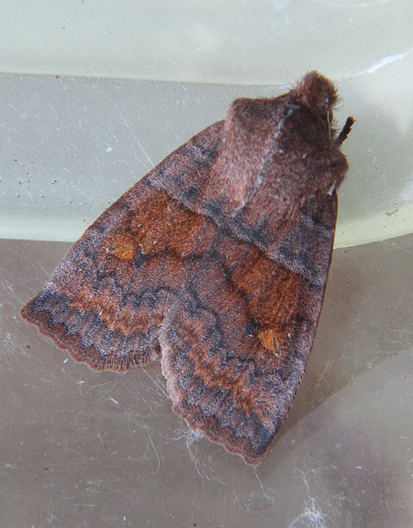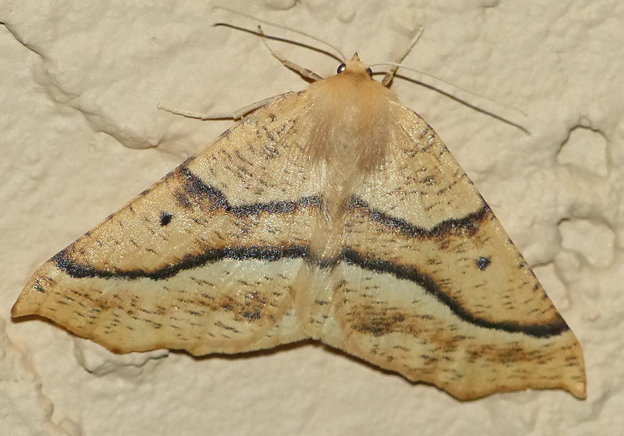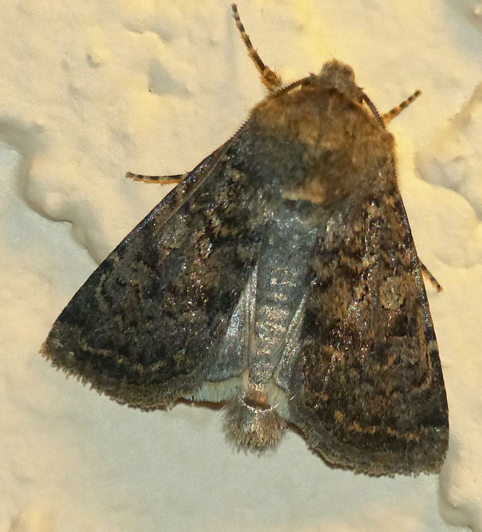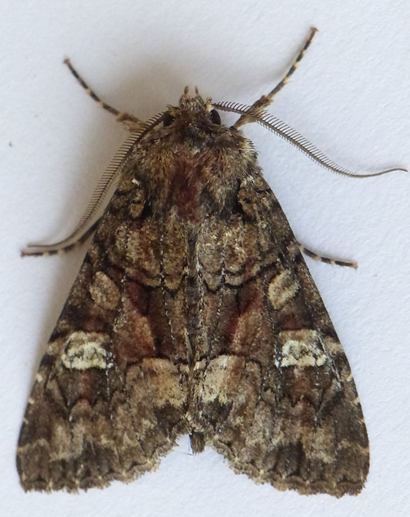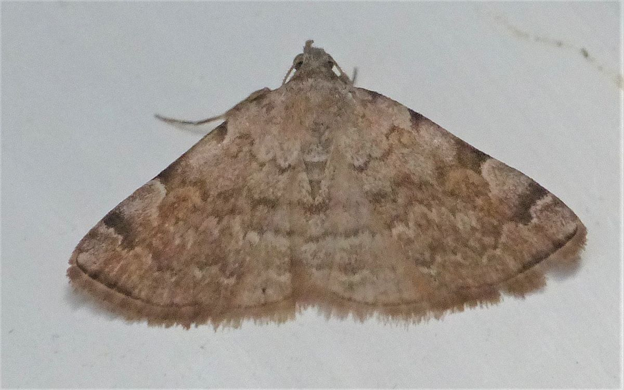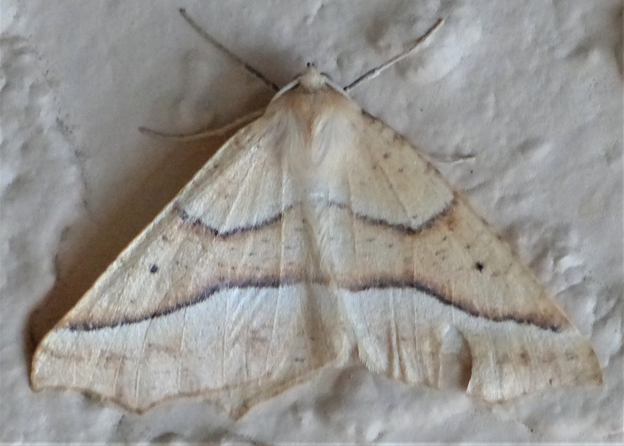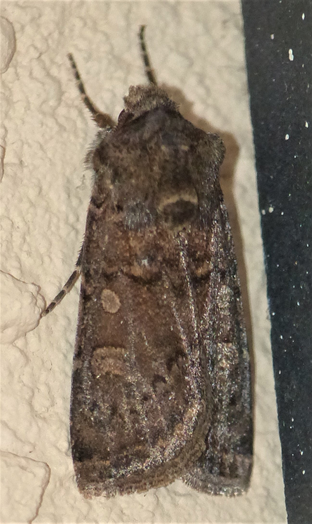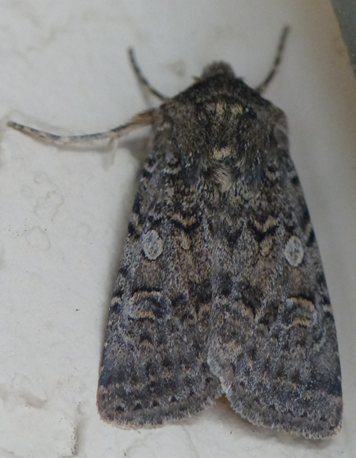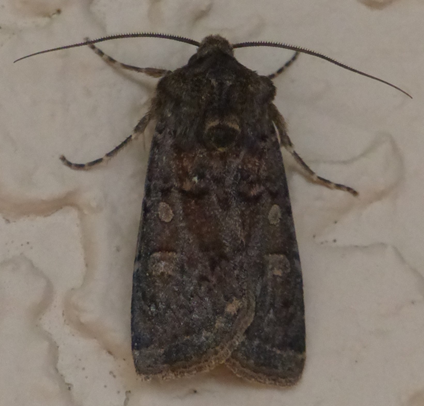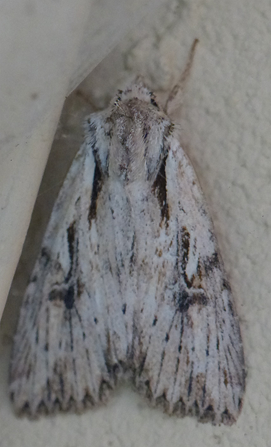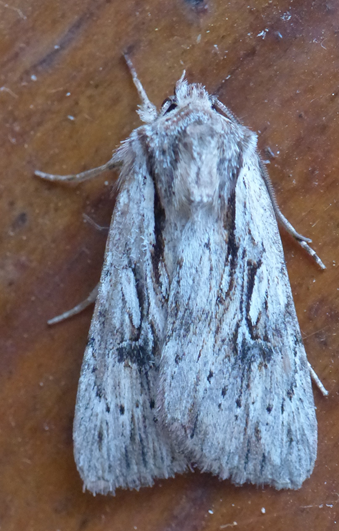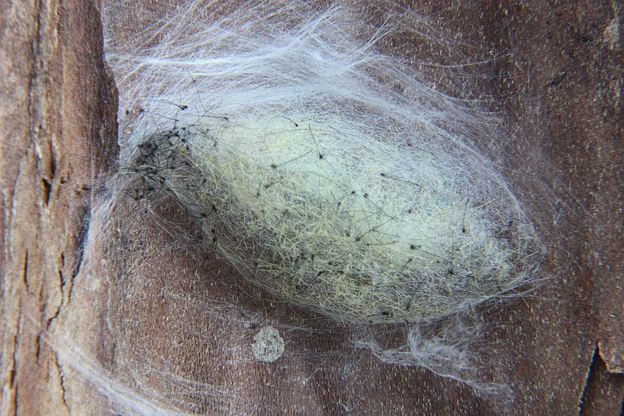2019 September 11
Jody Wells sends photographs of a dragonfly from Sluggett Reservoir, Brentwood Bay, September 10, and a spectacular White-lined Hawk Moth from McIntyre Reservoir, September 5. Jeremy Tatum writes: My apologies for misidentifying the dragonfly in the original posting. Dr Rob Cannings has put me right. Rob writes: This is an old male Sympetrum costiferum. Hard to see all the features, but the abdomen pattern is correct. Red venation (amber leading edge of wing present in younger individuals has faded away); red, black bordered stigma. Brown/red face. Brown to black legs. Fine black markings on sides of thorax not visible. Mature S. obtrusum always have a bright, white face. The abdomen has a strong triangular black patch on the side of each segment.

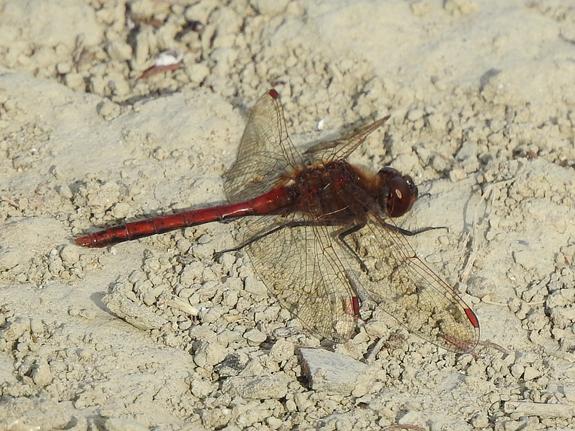
Saffron-winged Meadowhawk Sympetrum costiferum (Odo.: Libellulidae) Jody Wells

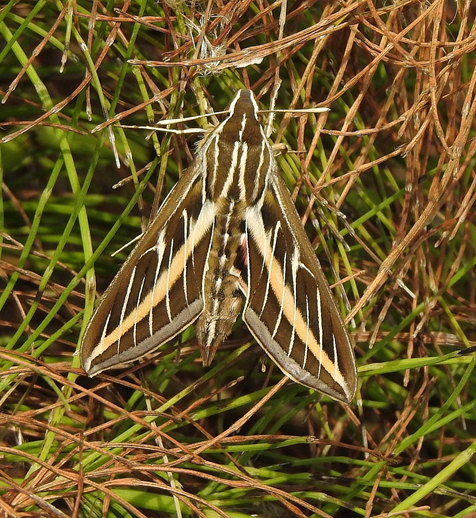
White-lined Hawk Moth Hyles lineata (Lep.: Sphingidae) Jody Wells
Gordon Hart sends a photograph of its close relative, the Bedstraw Hawk Moth, from the Petunias in his Highlands garden, Saptember 10. Gordon writes: * I enclose the blurry moth picture for identification, not for posting! * Well, maybe it is not quite as crisp and sharp as Jody’s moth at rest, but I think viewers will agree that a sight like this is just too exciting not to share. This is the fourth report this year of this species to Invert Alert. We have had two adults and a caterpillar earlier in the year.

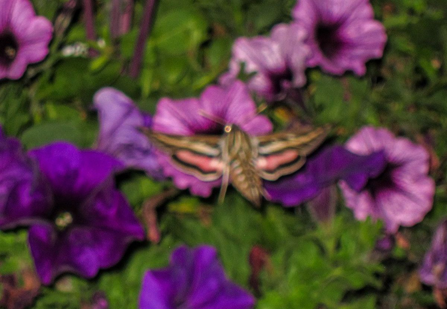
Bedstraw Hawk Moth Hyles gallii (Lep.: Sphingidae) Gordon Hart
Gordon also photographed a fresh Painted Lady also in his garden, September 10.

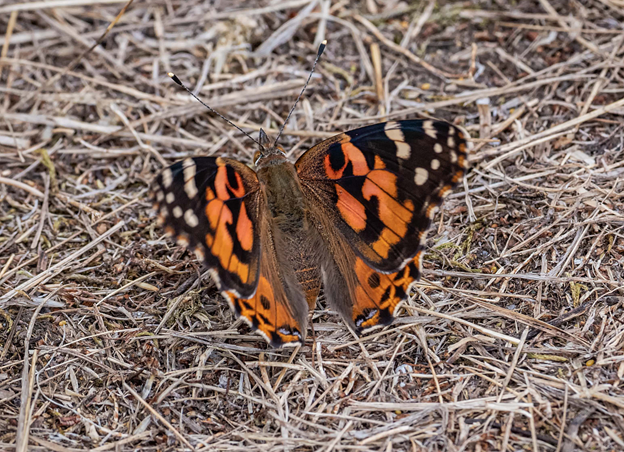
Painted Lady Vanessa cardui (Lep.: Nymphalidae) Gordon Hart
Jochen Möhr’s moths from Metchosin this morning. As usual, a huge thanks to Libby Avis for help with the identifications.
1 Drepanulatrix sp.
1 Ennomos magnaria
1 Fishia illocata
6 Lacinipolia pensilis
1 Neoalcis californiaria
1 Noctua pronuba
1 Platyptilia carduidactylus
1 Udea profundalis
4 Xestia finatimis-infimatis-verniloides complex

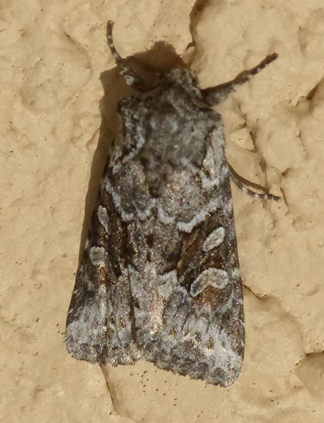
Lacinipolis pensilis (Lep.: Noctuidae) Jochen Möhr

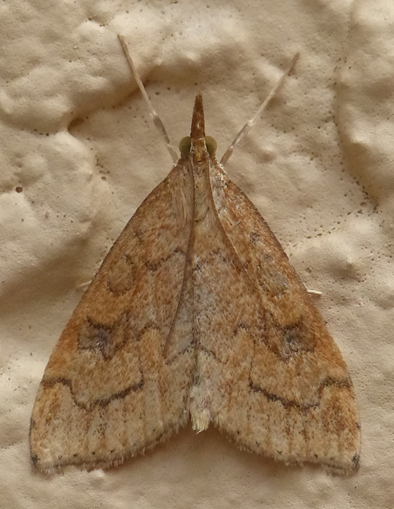
Udea profundalis (Lep.: Crambidae) Jochen Möhr

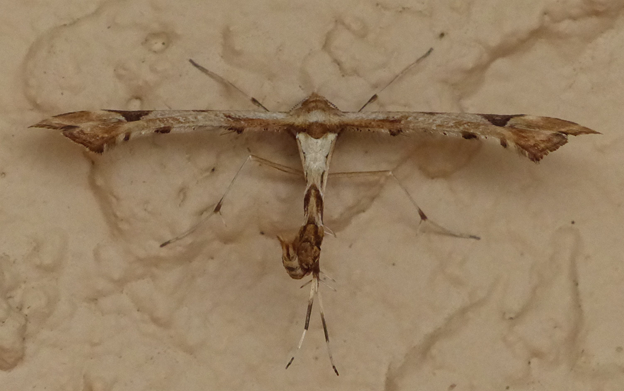
Platyptilia carduidactylus (Lep.: Pterophoridae) Jochen Möhr

